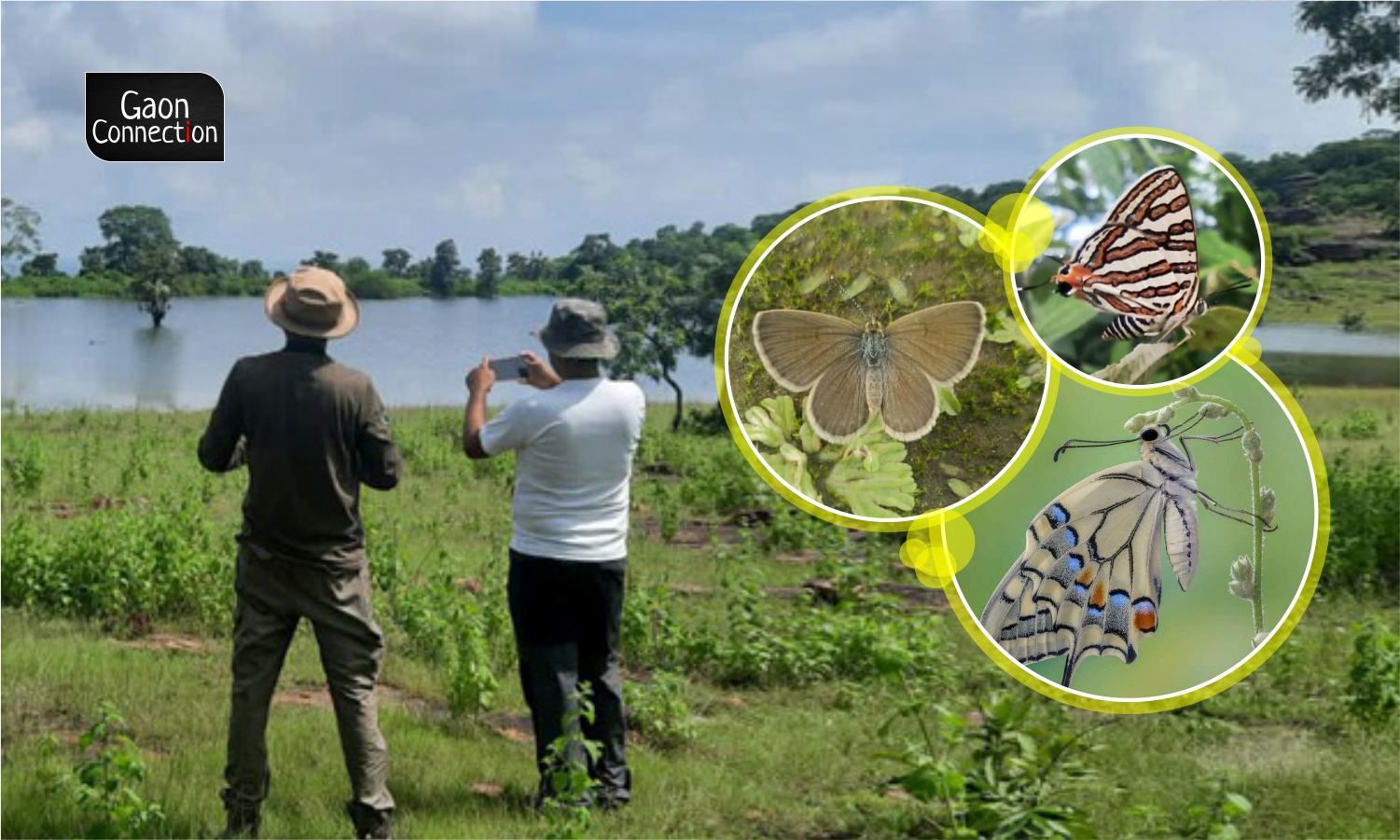The southwest monsoon period is the breeding season for butterflies which can be seen in all their glory, and in great numbers, at this time of the year. And so a team of 88 experts from 14 states across the country set off on a three-day butterfly survey in the Ratapani Wildlife Sanctuary in Raisen district of Madhya Pradesh.
And the experts returned with a list of 103 different species of butterflies that they spotted during their walk in the sanctuary on September 10, 11 and 12. The rare sightings included Pachmarhi Bush Brown, Angled Pierrot, Black Raja, Nawab Common Tree Brown and the Tri Coloured Pied Flat butterflies. The butterfly survey was organised by the state forest department. Two non profits – Indore-based Wild Warriors and Bhopal-based Tinsa Foundation – collaborated for the survey.
“The experts travelled on foot within the sanctuary to eighty different spots and discovered some really rare species of butterflies,” Pradeep Tripathi, superintendent of the Ratapani Wildlife Sanctuary, told Gaon Connection.
Also Read: Flight to extinction: 35 butterfly species in India on the verge of disappearing
The butterfly experts were also delighted to spot the Common Pierrot, Gram Blue, Common Gull and Danaid Eggfly species of butterflies that are protected by the Wildlife (Protection) Act 1972, said Tripathi.
NS Dugrial, former principal chief conservator of forests, and a butterfly expert, was part of the survey team as was K Raman, additional principal chief conservator of forests.
Butterfly effect
Butterflies are extremely sensitive to pollution and are a great indicator of the health of the environment.
“Wherever the presence of butterflies is low, it indicates high pollution, and similarly where there is a proliferation of butterflies, it indicates a clean environment,” Anil Nagar, retired officer from the Indian Forest Service, told Gaon Connection.
Also Read: The Jungli Badam tree: a generous host to birds, beetles and butterflies
“Butterflies are also a vital link in the food chain. And any disruption can have a ripple effect that adversely affects the rest of the chain. Therefore, the butterfly is as important as the tiger,” Nagar observed.
The retired forest officer went on to inform that the larvae of the butterfly consumes a lot of flora in the forests and in this way stops the uncontrolled growth of plants. “The larvae in turn are food for the birds, spiders, wasps etc. They maintain Nature’s balance and the role of butterflies cannot be overlooked,” Nagar emphasised.
Butterflies are vital to pollination, as they hop from flower to flower and transport the pollen. If there were no butterflies, many species of flora would just die out.
Also Read: Experts are studying the shifts in butterfly ranges to understand the impacts of climate change
In 2017, when Nagar was a field director at the Satpura Tiger Reserve, there was a butterfly survey and 90 experts participated and 126 species of butterflies were listed.
“Every tiger reserve should have a biodiversity survey. This way one can identify and learn more about the rare species,” Nagar said.
Long distance travellers
“While the butterflies’ flight path may look drunken, it is a fact that they cover thousands of kilometres,” Kabir Sanjay, Delhi-based wildlife expert and environmentalist, told Gaon Connection.
“The Monarch butterfly, for example, flies all the way from the Rocky Mountains in North America to Central Mexico, nearly five thousand kilometres away,” Sanjay said. They take the help of wind currents and float their way forward, he added.
Also Read: You may have not noticed the dragonflies but they do us a valuable service
According to wildlife experts, the delicate butterfly is as important as the mighty tiger. “In fact, there are many species of butterflies that are coloured and striped like the tiger. They also carry names such as Plain Tiger, Striped Tiger, Blue Tiger, Glassy Tiger and so on,” Nagar said.
He shared how at the Panna Tiger Reserve where he also served for a couple of years, he himself had listed more than 70 species of butterflies. “If a survey is carried out at the Panna Tiger Reserve, I am certain more than a hundred species of butterflies will be spotted there,” he added.


















